yeovil people
john aldridge
Founder of Kingston School
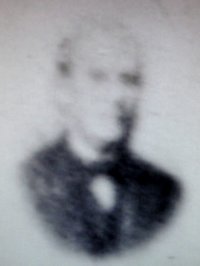 John Aldridge
was born 7 May
1812 at Lake,
Wiltshire, the
son of
agricultural
labourer Adam
Aldridge
(1770-1844) and
Mary née Blake
(1785-1871). By
the early 1840s
John and his
Sherborne-born
wife Ann had
moved to Yeovil
where in 1845
John established
a school in
Clarence Place,
Clarence
Street.
By the time of
the 1851 census
John had moved
his school to a
large house in
Kingston, next
to the
Red Lion Inn.
The house had
earlier been the
home of
Thomas Southwood Smith,
a young
physician, born in
Martock, who
practiced
medicine in
Yeovil and also
took charge of
the
Unitarian
chapel in
Vicarage Street
between 1816 and
1820.
John Aldridge
was born 7 May
1812 at Lake,
Wiltshire, the
son of
agricultural
labourer Adam
Aldridge
(1770-1844) and
Mary née Blake
(1785-1871). By
the early 1840s
John and his
Sherborne-born
wife Ann had
moved to Yeovil
where in 1845
John established
a school in
Clarence Place,
Clarence
Street.
By the time of
the 1851 census
John had moved
his school to a
large house in
Kingston, next
to the
Red Lion Inn.
The house had
earlier been the
home of
Thomas Southwood Smith,
a young
physician, born in
Martock, who
practiced
medicine in
Yeovil and also
took charge of
the
Unitarian
chapel in
Vicarage Street
between 1816 and
1820.
Aldridge's school, which was to become known as Kingston School, was home to John and Ann, their two children also called John and Ann, together with an assistant schoolmaster, two domestic servants and fourteen boarding pupils, all boys aged between 9 and 15. John and Ann were still living there in 1861 together with John's mother Mary, five of their children, three assistant schoolmasters, a cook, two housemaids, a manservant and twenty boarding pupils aged between 7 and 16. In the 1871 census John and Ann were living there with their sons Alfred and Walter, daughter Annie, two schoolmasters, their son John aged 15 and an assistant master, three domestic servants and 35 male boarding pupils aged between 9 and 16.
When John Aldridge founded Kingston School it was in a large three-storey house in Kingston, but set well back from the road, with a very large three-storey extension as shown in the illustrations below. The house had been built prior to 1831 when it was shown on Watt's map without its extension, which still didn't appear in Bidder's map of 1843. It also appears to be missing in the first sketch below. It is likely that John Aldridge added the first extension and in 1887 he enlarged the building with its second large extension. He bought three cottages in Kingston, in front of his school, which he demolished in order to build a large extension that reached right up to the road as shown in the photograph below. In this photograph, to the right, is also seen the original three-storey building.
Kingston School was a boarding school at which the students lived in accommodation on the school premises. Additionally the school took in parlour boarders, for an increased fee. The parlour boarder was a special category of boarder, normally the child of deceased or wealthy parents, who was put in the care of the headmaster or headmistress of the school and, while attending classes with the rest of the students, was nevertheless treated as a cut above the other pupils. The parlour boarder might, in fact, live with the headmaster or headmistress and their family, taking meals with the family as well as having the use of a personal sitting-room. Frequently the parlour boarder had a rich guardian, or a fortune in the hands of trustees left for the education and maintenance of the child. Alternatively parlour boarders were sometimes the children of parents or guardians who might be stationed abroad, for whatever reason, where a young child could not accompany them in safety.
Of particular interest is the advertisement below outlining the subjects taught at the school. In this advertisement Mr Aldridge informed parents that he was able to "offer to their notice such a course of sound and really useful instruction as shall fit their Sons for either commercial or agricultural pursuits. For the former, particular attention is paid to Mental Arithmetic, Commercial Letters, Invoices, and Book-keeping, by both Single and Double Entry; and those boys destined to follow the latter are well instructed in Mensuration, theoretically in the School-room, and practically in the Field. Pupils are also taught to measure and value different kinds of Timber whilst lying in the field, and during its preparation for building, or other purposes. Drawings in various styles, both from Copies and Models, and sketching from Nature, as well as Mathematical Drawings of Architectural Designs, French, Music, Singing, and Drilling, form a part of every day's instruction."
Ann died on 15 December 1874 and in the 1881 census John was listed as a widowed schoolmaster living at Kingston School with his daughter Annie listed as his housekeeper, together with an assistant housekeeper, a cook, housemaid and manservant. Additionally there were four teachers living there including John's son Alfred and his daughter Martha. There were also 21 male boarding pupils aged between 8 and 16.
John Aldridge was one of the pioneers of school advertising, placing his illustrated advertisement in Whitby's 1883 Yeovil Almanack Advertiser, six years before any other school began advertising.
By the time of the 1891 census Kingston School was being run by John's son Alfred. Alfred and his wife Catherine were living at the school with their two young sons Alfred and Walter as well as John who now gave his occupation as retired schoolmaster. The domestic staff included a matron, cook, parlour maid, two housemaids, a nurse and a page. Additionally there were five live-in assistant schoolmasters and 54 male boarding pupils.
John Aldridge died on 19 February 1892 aged 79. He is buried in Yeovil Cemetery with his first wife, Anne (see below). A brass, or bronze, tablet with ornate decoration of architectural arches and columns in black inlay, with lettering in black inlay with red inlay capital letters, 52cm wide x 53.5cm high, was originally affixed to the wall of the Baptist church in South Street. The inscription was as follows -
This tablet is
erected to the
memory of JOHN
ALDRIDGE for 47
years
he was a member
and for 28 years
a beloved
Deacon of this
Church. His sons
& daughters
revere his
memory: the
Church feels
deeply
indebted to him
for much
valuable
service,
and no Minister
could wish for a
more
sympathetic
helpful and
loving friend
Departed this
life February
19th 1892
Aged 79.
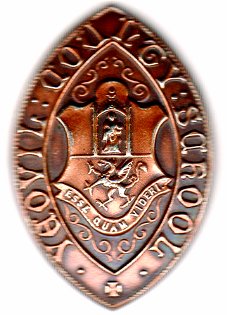 Kingston School
was to be
enlarged and
renamed Yeovil
County School in
1905 following
the Education
Act 1902 and in
1925 was renamed
yet again to The
Yeovil School.
The school moved
to new buildings
in Mudford Road
in 1938 and in
1974 became part
of Yeovil
College.
Kingston School
was to be
enlarged and
renamed Yeovil
County School in
1905 following
the Education
Act 1902 and in
1925 was renamed
yet again to The
Yeovil School.
The school moved
to new buildings
in Mudford Road
in 1938 and in
1974 became part
of Yeovil
College.
Following the move to Mudford Road, the original Kingston School building in Kingston became the Technical Institute and School of Art until 1963 when Yeovil College opened. It was demolished in 1968 as part of the widening of Kingston and the building of the new District Hospital.
Cap Badge
photograph
Courtesy of the
Old Yeovilians
Association Archive
For details of the Pittard 'House' Shield - click here.
map
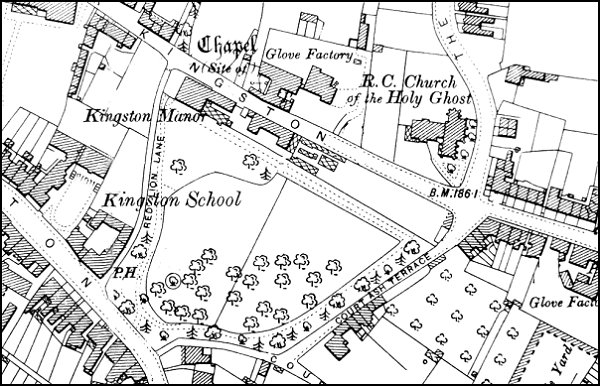
This map, based on the 1901 Ordnance Survey, shows Kingston School at centre left.
gallery
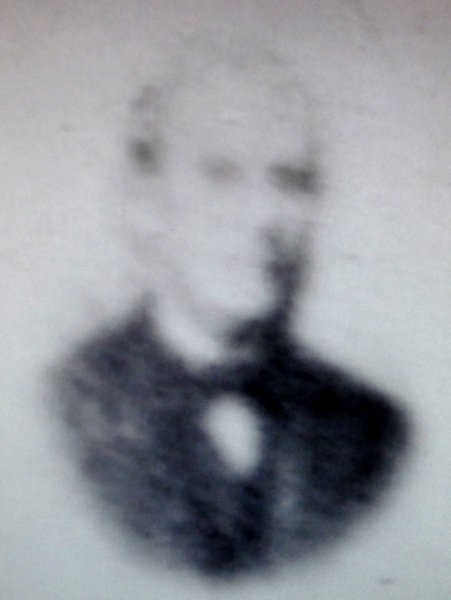
Courtesy of Dave
Shorey
Apologies for the very poor quality, but this is thought to be the only photograph (now lost) of John Aldridge.
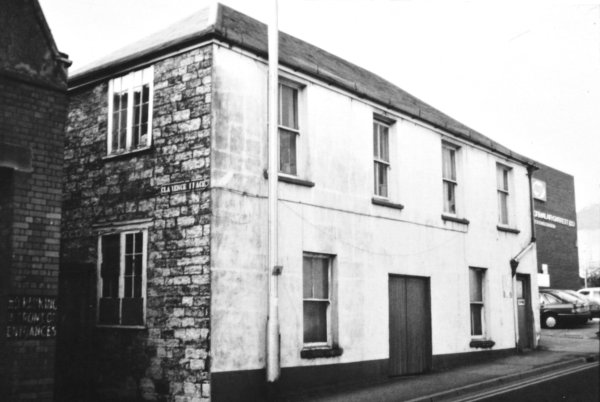
Photographed in the mid-1960s, this building facing onto Clarence Street is often cited as being the Clarence Place building in which John Aldridge founded his school, the precursor to the Kingston or County School, in 1845. In fact this photograph shows only the narrow entrance to Clarence Place (nameplate is on the side of the building) which ran alongside the building in this photograph. The original school was in a building behind these buildings.
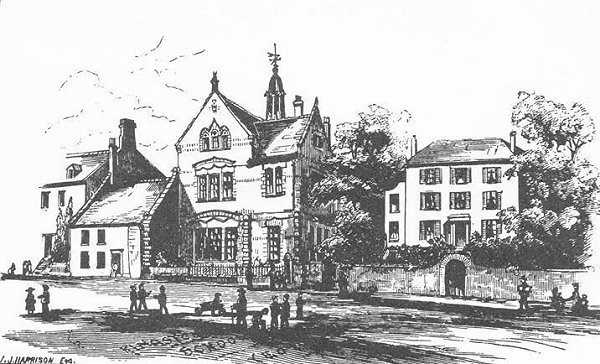
This sketch probably dates to the early 1850s, around the time that John Aldridge acquired the buildings for his school. The cottages at left were later acquired by John - he demolished them to allow his school to be enlarged.
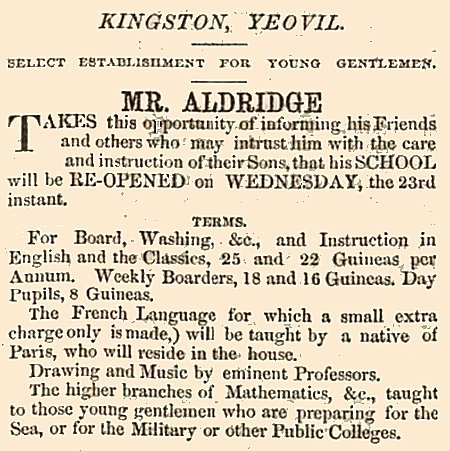
John Aldridge's advertisement placed in the 22 July 1851 edition of the Sherborne Mercury.
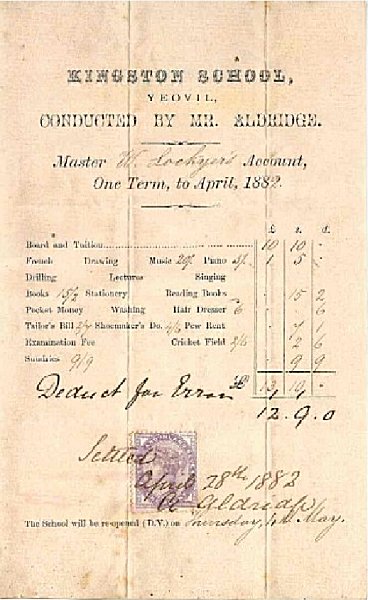
Courtesy of the
Old Yeovilians
Association Archive
This receipt for Master W Lockyer's term attendance to April 1882 is the earliest record of the cost of attending Kingston School.
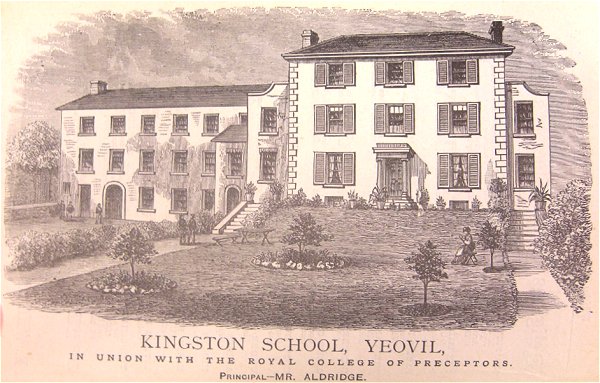
An advertisement in Whitby's 1883 Yeovil Almanack Advertiser for John Aldridge's Kingston School. This is the original house in which the school was founded, set well back from the road.
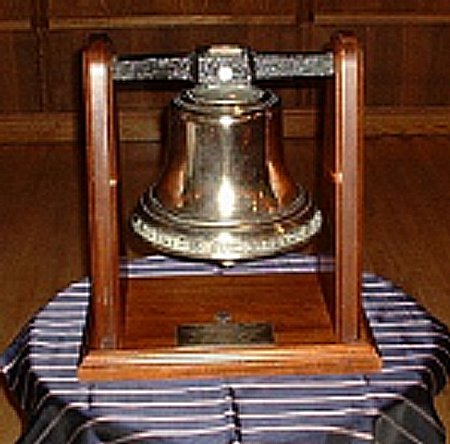
Courtesy of the
Old Yeovilians
Association Archive
Cast by Warner & Sons 1888, the school bell is thought to have been transferred from the Kingston School to the new school in Mudford Road in 1938 and was rescued during the demolition of the old school. The many layers of white paint were chemically removed.
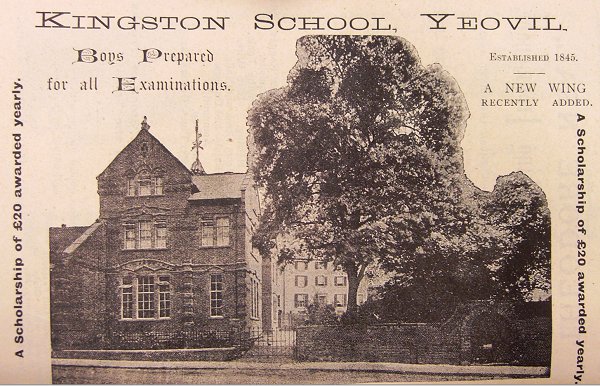
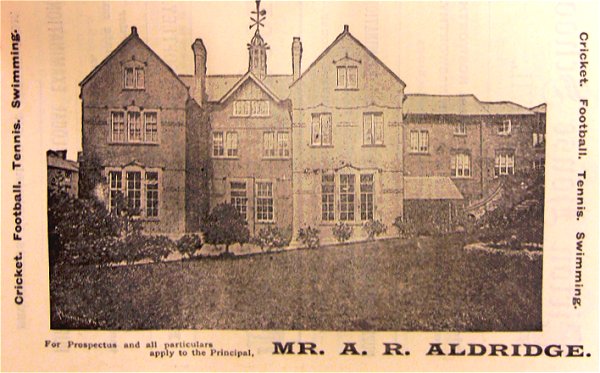
A two-page advertisement in the 1892 edition of Whitby's Yeovil Almanack Advertiser for Aldridge's Kingston School. By this time John Aldridge's son, Alfred. The upper photo shows the elevation of John Aldridge's extension facing Kingston. The lower photograph shows the extension from the side; Kingston was at the extreme left edge of the photograph and the original school building just off the photograph to the right. The scale of the extension and original house with its first extension is best appreciated from the map above.
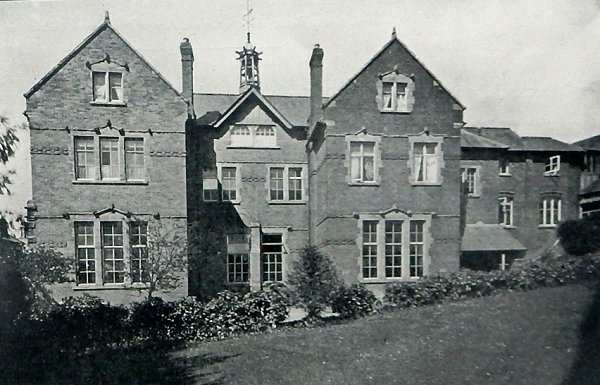
This photograph was taken by Yeovil Photographer Jarratt Beckett and published in his 1897 book "Somerset viewed through a Camera".
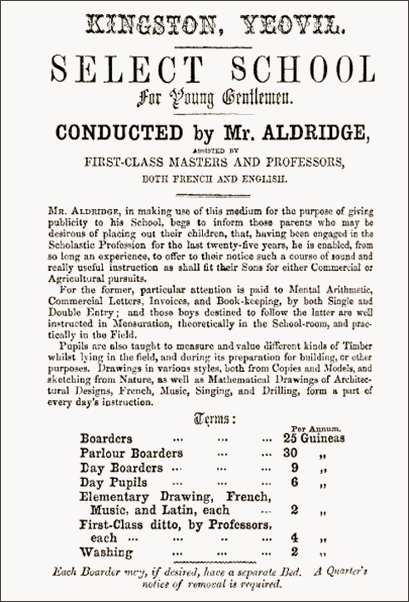
An advertisement from Alfred Aldridge's time as Principal - not sure of exactly when but probably just before 1900. Nice to see that each boarder could "if desired" have their own bed.
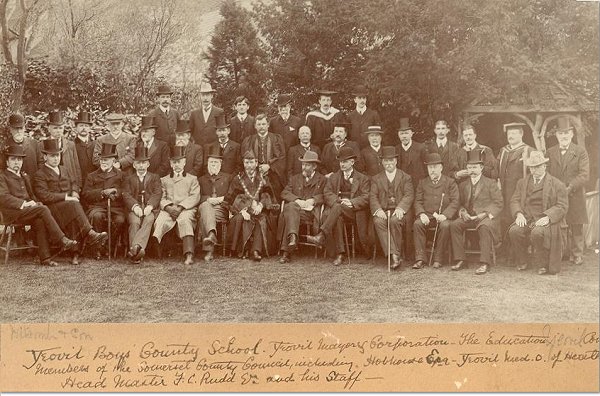
Courtesy of the
Old Yeovilians
Association Archive
A group photograph, dated 1900, of the headmaster and staff together with the Mayor and members of the Corporation, the Education Committee and Somerset County Council.
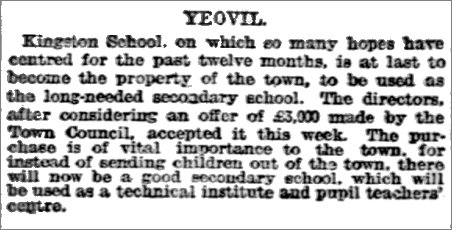
A report in the 26 September 1904 edition of the Western Daily Press announcing that the school was to be acquired. Kingston School was to be enlarged and renamed Yeovil County School in 1905 following the Education Act 1902.
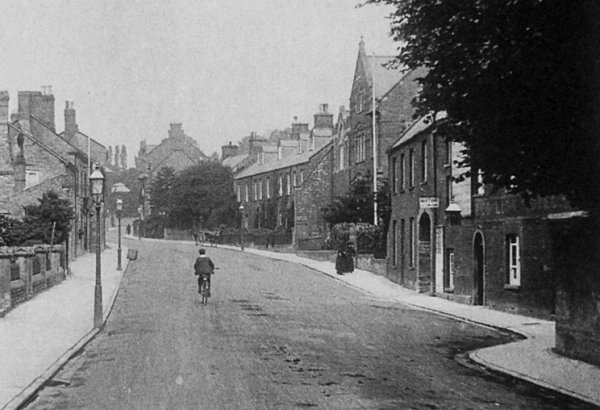
The Red Lion Inn is seen at right, partly hidden by the tree, in this photograph taken around 1905. Next door to the pub, identified by the flag pole, was the Yeovil County School.
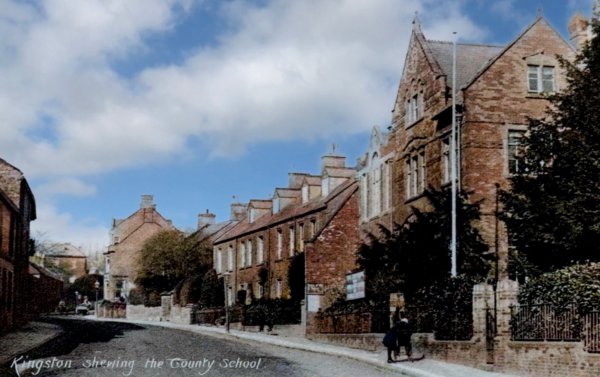
From my
collection
-
This photograph
features in my
book 'Yeovil From Old Photographs'.
A colourised postcard of about 1910 by which time Kingston School had been renamed the County School. Believe it or not, at the far end of Kingston is a man riding a horse down the road.
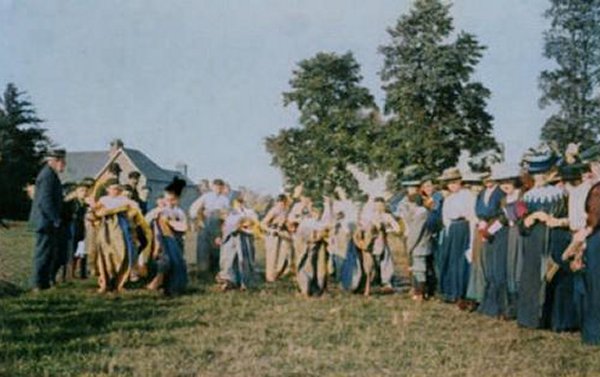
The sack race - part of sports day at the County School in 1909.
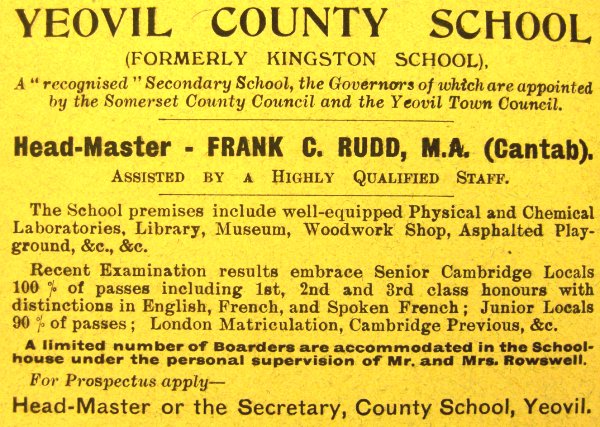
An advertisement for the Yeovil County School in Whitby's Yeovil Almanack Advertiser of 1916.
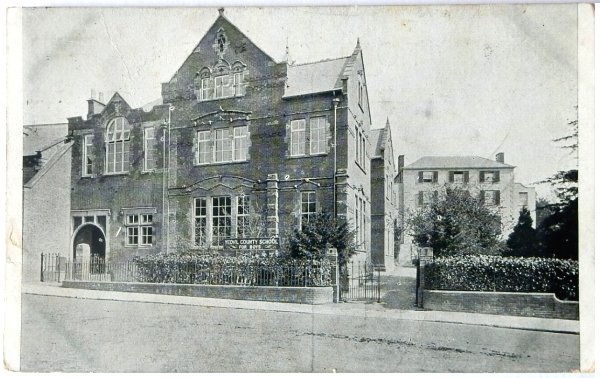
From my
collection.
This
photograph
features in my
book "Lost Yeovil"
This postcard dates to 1909 with the sign reading "Yeovil County School for Boys". The building to the left is the extension to the school built in the period between 1883 and 1892 by John Aldridge. To the right is seen the original three-storey house in which he founded Kingston School.
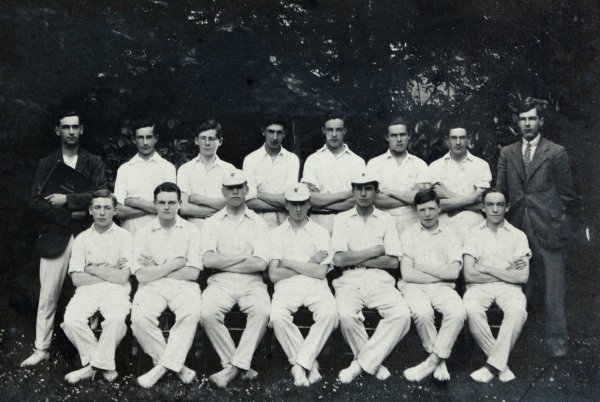
Courtesy of Bill and Audrey Robertson
The 1927 season Yeovil School cricket team. A photograph by Walter S Rendall of Yeovil.
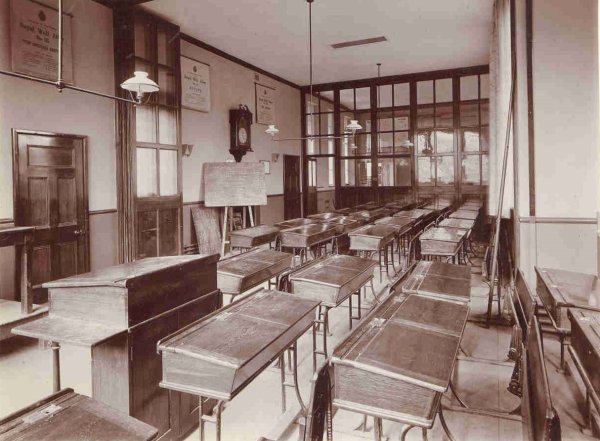
Courtesy of the
Old Yeovilians
Association Archive
The principal classrooms in the Kingston premises, photographed around 1908.
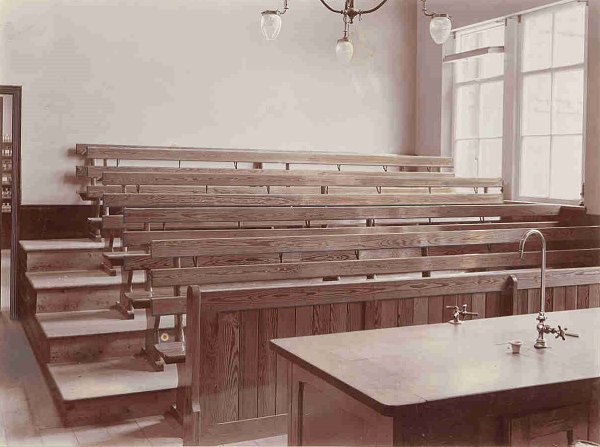
Courtesy of the
Old Yeovilians
Association Archive
The science lecture room in the Kingston premises, photographed around 1908.
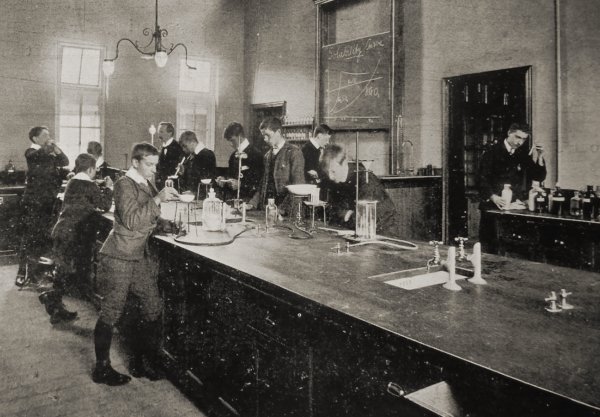
Courtesy of Jack
Sweet
The 'chemical laboratory' photographed by Witcomb & Son around 1908 for the school prospectus.
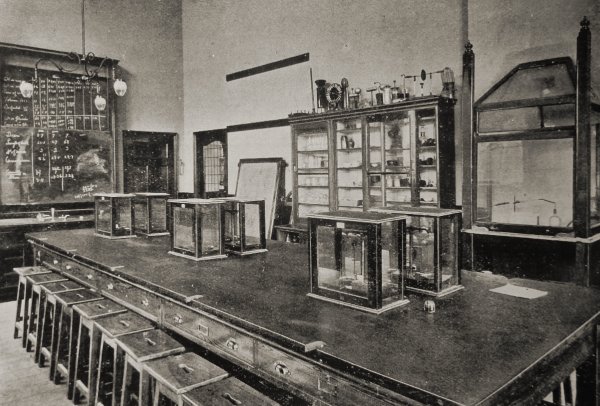
Courtesy of Jack
Sweet
The 'physical laboratory' again by Witcomb & Son around 1908.
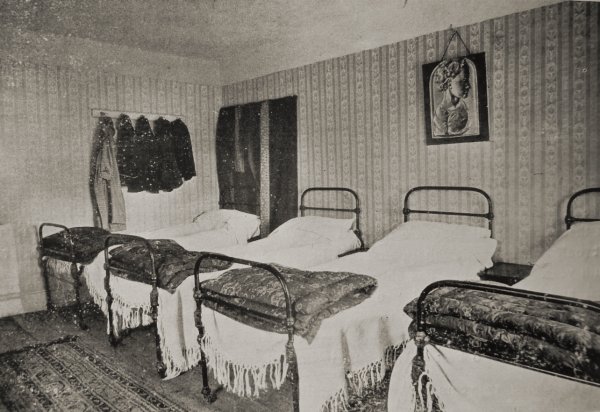
Courtesy of Jack
Sweet
A typical dormitory of around 1908.
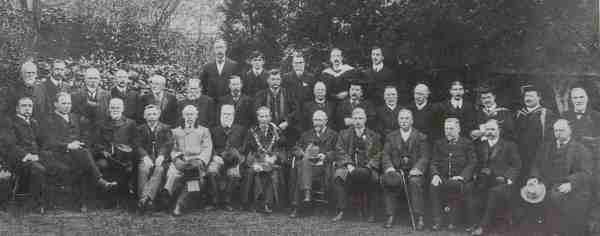
Yeovil Boys County School Governors and Staff, photographed by Henry Stiby around 1909.
Back Row, L to R -
Charles J Hook, Unknown, Unknown, Unknown,
Unknown.
Middle Row - Unknown, Unknown, John Reid, Unknown,
Dr William
Hunt, Unknown, Unknown, Dr Ptolemy Colmer Jnr,
Unknown, Frank C Rudd (Headmaster), Unknown, George H Gould, Unknown, Frank E
Bastick (Music Master), Unknown, Ebenezer Pittard.
Front Row - John Vincent,
Unknown, Unknown, Unknown, John Henry Boll,
Henry Stiby, Mayor Alderman William Cole, Unknown,
Unknown, Levi Beer,
Edmund Damon, Norman Buchanan,
Herbert W Southcombe.
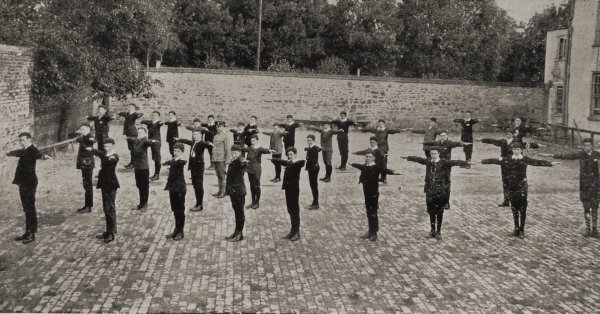
Courtesy of Jack
Sweet
This photograph was captioned "Play Ground - Scholars at Military Drill".
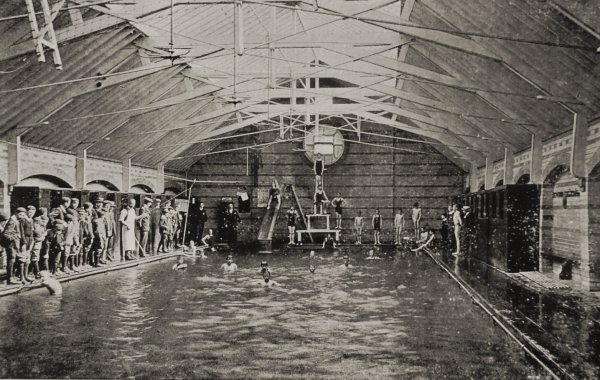
Courtesy of Jack
Sweet
This photograph was captioned "Swimming Bath", perhaps inferring that it was located on site. In fact this photograph is of the students at the public Corporation Baths in Huish.
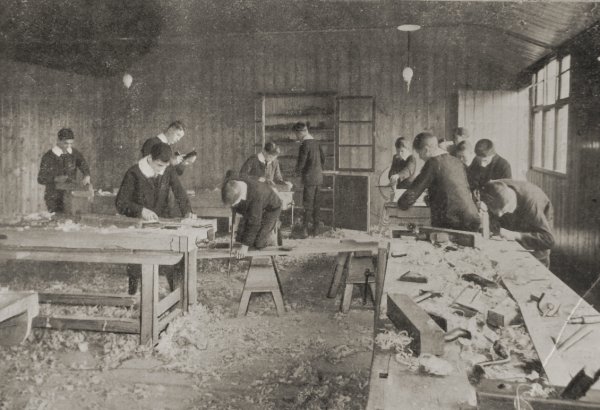
Courtesy of Jack
Sweet
The "Carpentry Workshop".
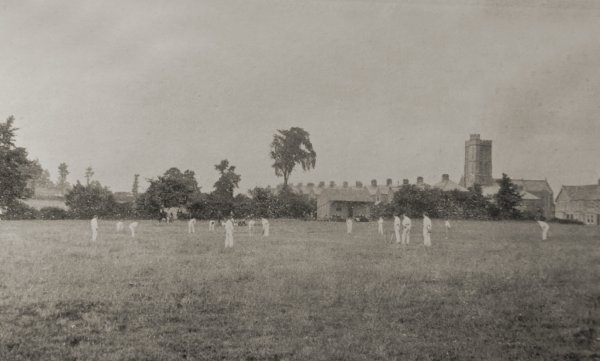
Courtesy of Jack
Sweet
The "Playing Field".
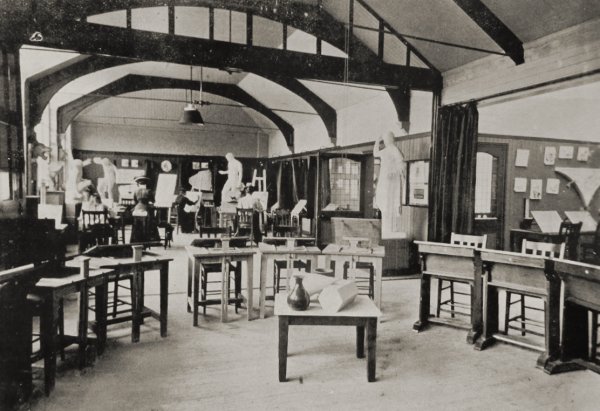
Courtesy of Jack
Sweet
The "School of Art".
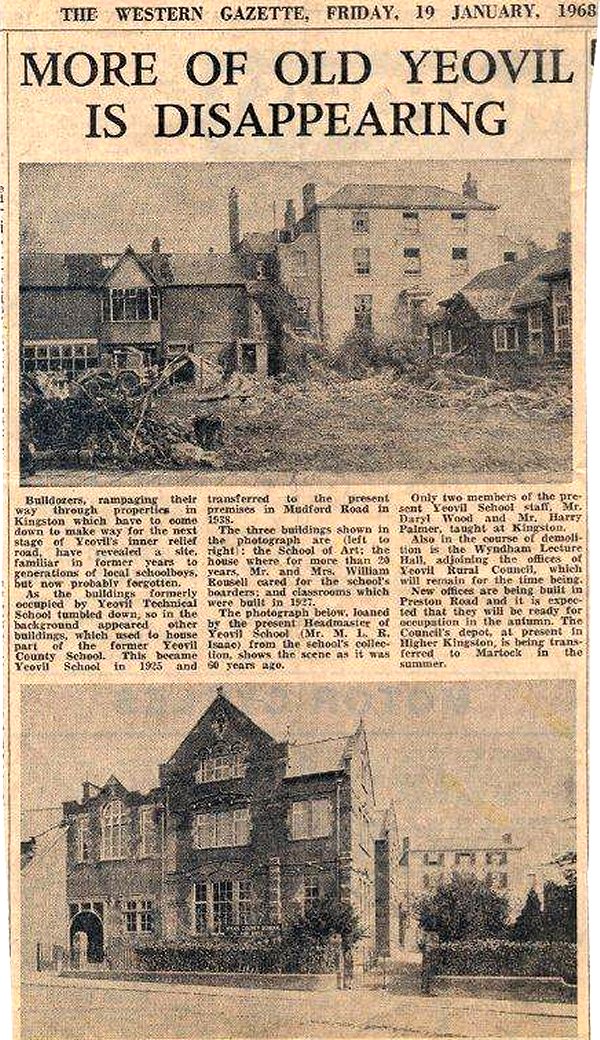
Courtesy of
David Gibbs
The demolition of the Kingston buildings as reported in the 19 January 1968 edition of the Western Gazette.
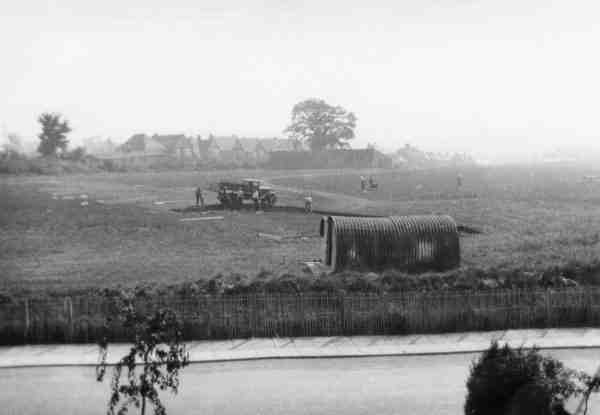
Courtesy of the
Old Yeovilians
Association Archive
The field known as 'Higher Roping Path' seen from Mudford Road and looking across to the houses in Goldcroft around 1935. The ground is being marked out for Yeovil County School. The site is now occupied by College Green.
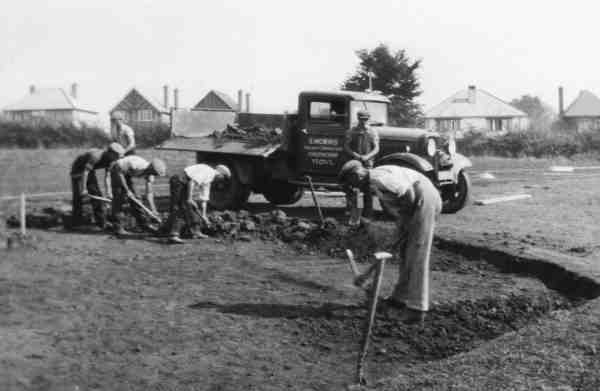
Courtesy of the
Old Yeovilians
Association Archive
The initial groundworks being carried out by hand. The sub-contractor was Sidney Morris of Chilthorne Domer.
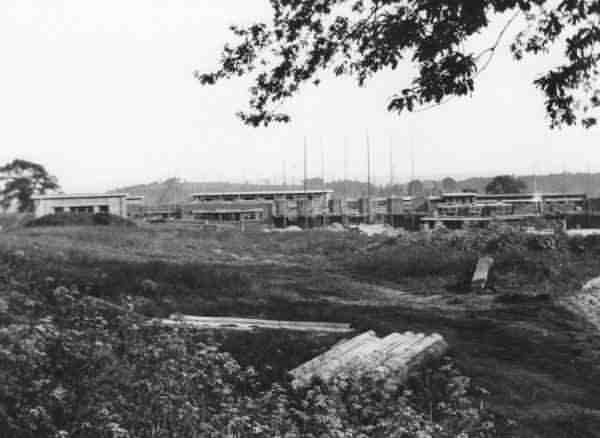
Courtesy of the
Old Yeovilians
Association Archive
The new school buildings take shape.
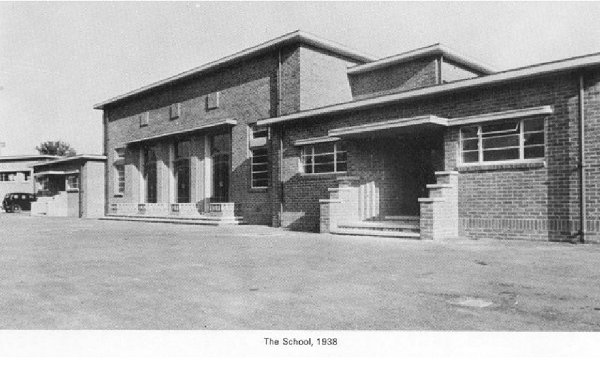
Courtesy of the
Old Yeovilians
Association Archive
The newly-built Mudford Road school, photographed in 1938.
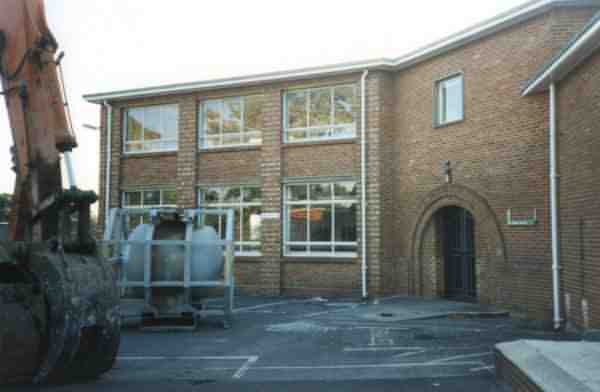
Courtesy of John
Cornelius
The Grammar School about to be demolished in 1998.
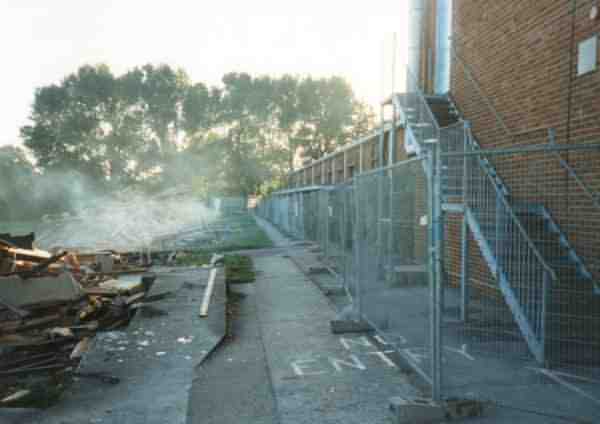
Courtesy of John
Cornelius
Demolition begins in 1998.
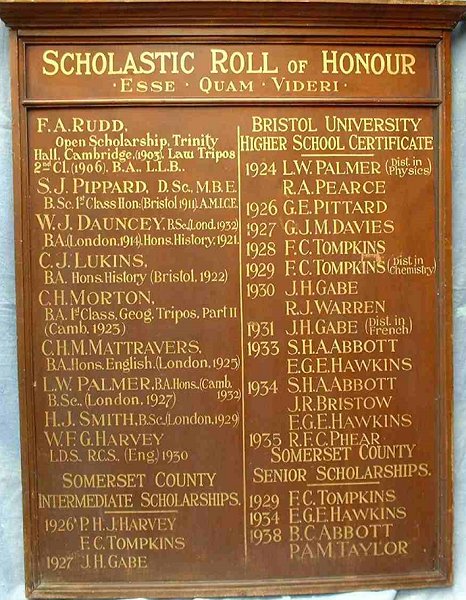
Courtesy of the
Old Yeovilians
Association Archive
The first of the school's "Scholastic Roll of Honour" boards, rescued at the time of the school's closure in 1974 and now stored at the Community Heritage Access Centre, Artillery Road. Consequently, since Yeovil no longer has a museum but just this glorified storage shed hidden away on the very edge of town with no public transport access, sadly very few Yeovilians or visitors to the town will ever see them again.
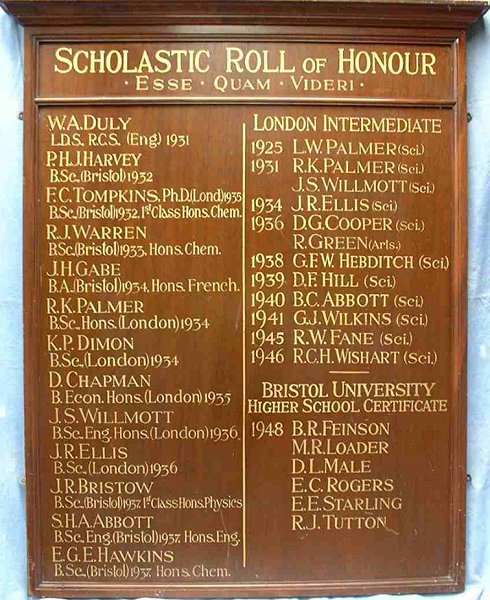
Courtesy of the
Old Yeovilians
Association Archive
The second of the school's "Scholastic Roll of Honour" boards.
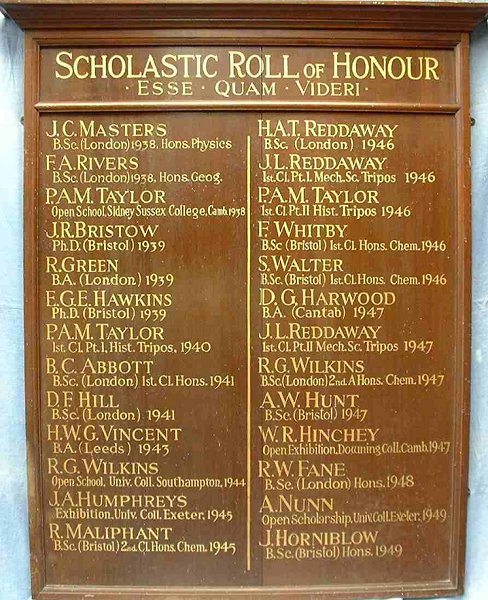
Courtesy of the
Old Yeovilians
Association Archive
The third of the school's "Scholastic Roll of Honour" boards.
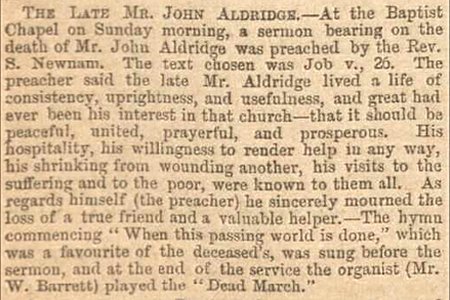
A report on the sermon bearing on the death of John Aldridge at the Baptist Chapel, from the Western Gazette's edition of 4 March 1892.
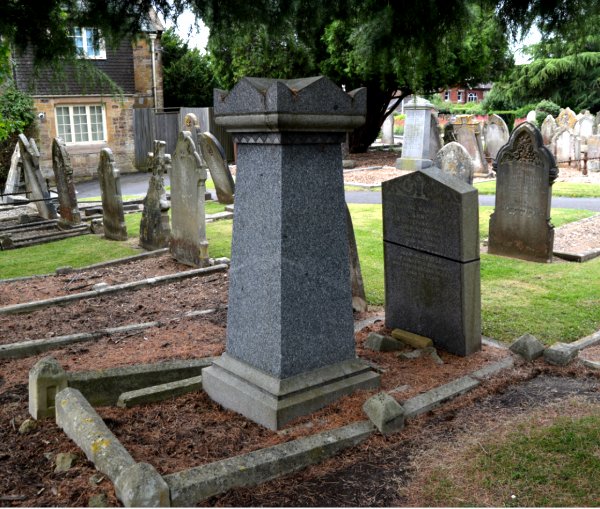
John and Anne Aldridge's grave in Yeovil Cemetery. Photographed in 2014.
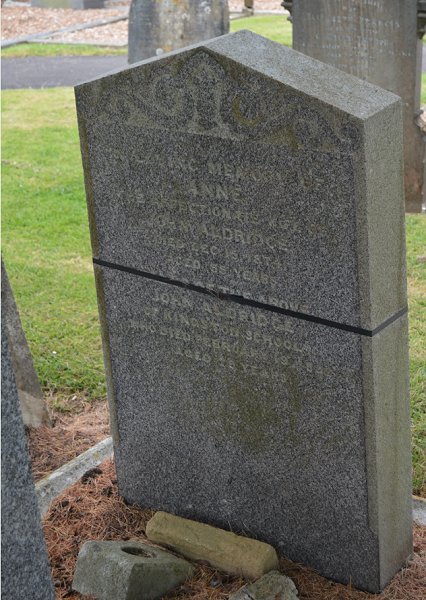
John and Anne Aldridge's headstone in Yeovil Cemetery. Photographed in 2014. (The black strap is to support the headstone which is unsafe).